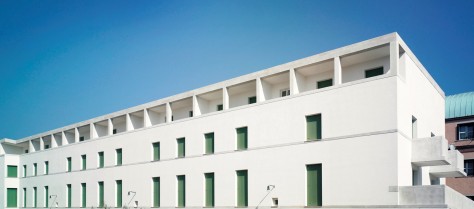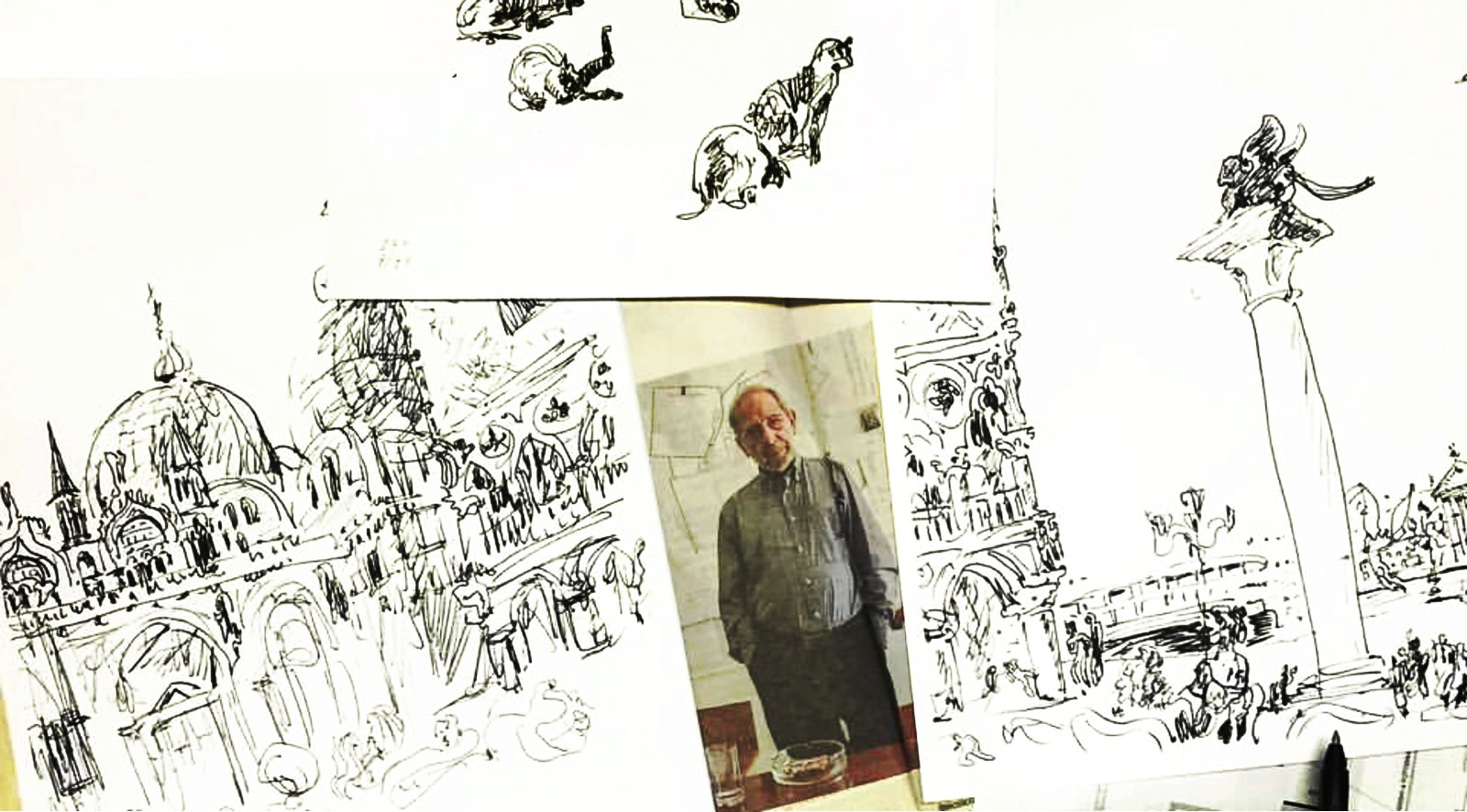
Away from crowds that will inevitably storm the Giardini of the 15th Venice Biennale, the Portuguese Pavilion will be quite literally “Reporting from the Front” as it will be set oppositely in Álvaro Siza’s 1985 social housing project for the Giudecca Island. Debating among its actual population the perhaps less glamorous aspects of architecture, such as immigration, low income housing, social (in)equality and post-war reconstruction, the exhibitions will occupy the worksite’s unfinished structure from May 28th to November 27th.

The site itself is ripe with the work and history of several architects. In 1986, the former Institute of Public Housing (IACP) had decided to split the project among the original 1983 competition winners: Álvaro Siza, Aldo Rossi, Carlo Aymonino and Rafael Moneo. Rossi and Aymonino’s interventions were fulfilled in 2004, as well as the first portion of Siza’s building, a while later. Unfortunately construction was suspended in 2010, but the now Territorial Bureau of Housing (ATER) is set to resume work, as Siza completes the Campo di Marte square/garden that Moneo will finally enclose with his missing block.

Fifty years after the publication of “The Architecture of the City” by Aldo Rossi, its legacy is in a way revisited in this place and also through the exhibition “Where Álvaro Meets Aldo”, that reconstructs the bonds between these two architects across a series of moments, letters and neighboring works, archived at the Canadian Centre for Architecture (CCA) and Venice University’s Institute of Architecture (IUAV).

Neighborhood then becomes a core notion that the curators, architects Nuno Grande and Roberto Cremascoli, will showcase on opening day with an 80 meter long dining table for Siza, Moneo, the homeowners and their communal associations. Known for many years as “the architect of participation”, Álvaro Siza will once again give voice to these communities by visiting the old and new residents of his social housing projects around Europe, in February / March, and displaying the filmed encounters.

That spirit turned him into the most symbolic architect of the revolution (1974), patching both the urban fabrics and social needs of the time with innovative, siedlung-inspired projects like Bairro da Bouça, in his hometown of Porto, or the Schlesisches Tor (aka “Bonjour Tristesse”), in Berlin. The models of dictatorship were dead and rebuilding countries meant reintegrating the population, bridging the cultural divide between people of diverse financial and ethnic backgrounds, in order to break the European cycle of gentrification and impoverishment.

The IBA gave Siza the opportunity to work abroad for the first time, dealing with design issues associated with intense immigration waves, mostly Muslim in origin. Such subjects and solutions are just as relevant and valid today as they were then. The sophistication with which the Kreuzberg interventions balanced the spatial needs of Turkish family traditions and the domestic equality of women won him an invitation to solve similar problems in Holland.

In the Schilderswijk project, just a train track away from Rossi, dialogue was additionally accompanied by 1:1 scale mockups of the living quarters that emphasize Álvaro Siza’s transnational commitment to interpreting the will of the People and customizing age-old archetypes into a myriad of typological languages and personalized forms. This and much more will be revealed on February 13th, in a public opening of the Portuguese Pavilion, commissioned by the Directorate-General for the Arts (DGArtes).

2016 will also mark the debut of Siza’s new documentary, directed by German filmmaker Mathias Frick, and the opening of two other major exhibitions about his work. On July 23rd, an enlarged version of the international traveling exhibit “Visions of the Alhambra” will grace Toronto’s Aga Kahn Museum with multiple reliques on loan by the Council of the Alhambra & Generalife and an encompassing overview of Granada’s most important public project: The New Gate by Álvaro Siza and Juan Domingo Santos.

Later in the fall Rome’s MAXXI Museum will present “Álvaro Siza. Sacred”, curated by Italian professor Achille Bonito Oliva for the year of the Jubilee and devoted to hallowed architecture, or rather to the themes of intensity of space and time passing. The duality of the ruins of a church in Sicily and a castle in Naples or the unfinished structure of a Faculty of Architecture in Porto (FAUP), features a process in which public buildings and spaces have become the new cathedrals of the 20th and 21th century.

